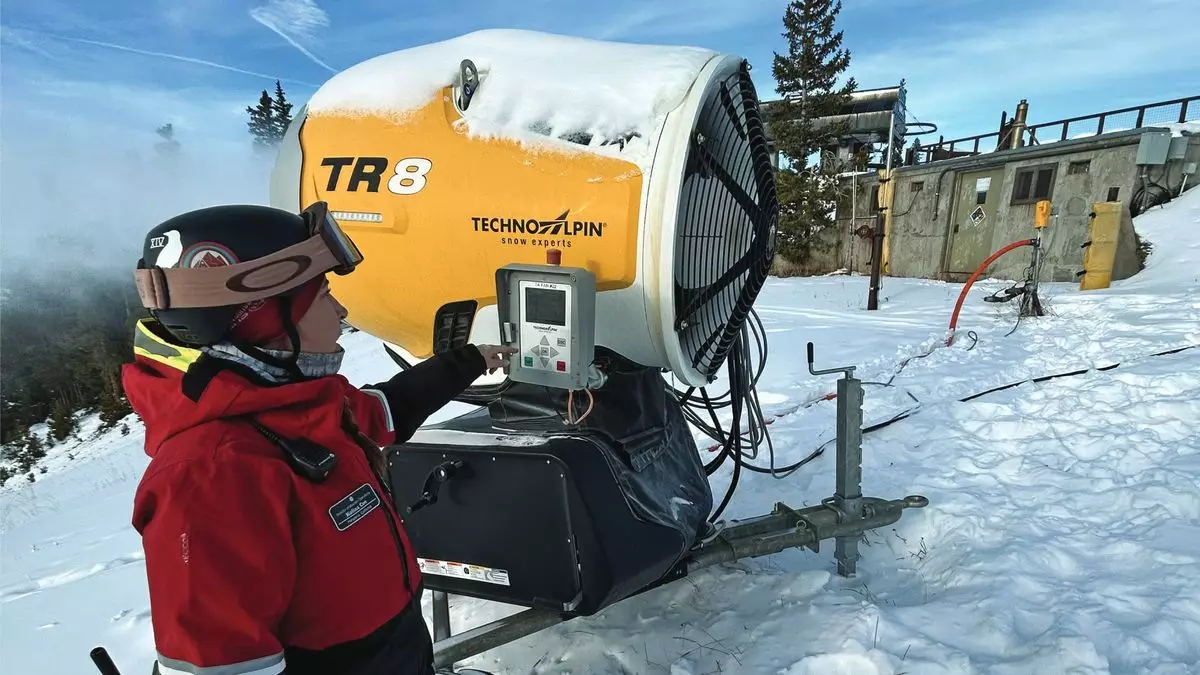As winter approaches, ski resorts are increasingly reliant on advanced snowmaking technologies to ensure optimal conditions for skiing enthusiasts. At Keystone Resort, located at a staggering elevation of 11,640 feet, workers are busy preparing for the winter season by utilizing a sophisticated snowmaking operation. On one crisp Friday morning before Thanksgiving, the resort was a hive of activity, featuring mobile fan guns from the Italian manufacturer TechnoAlpin working tirelessly to convert water droplets into snow. This innovative technology is pivotal in establishing a solid snow base, particularly as the climate increasingly influences weather patterns and snow availability.
The air temperature hovered around 32.9 degrees Fahrenheit, and an impressively low humidity level of just 14% meant that snow could be efficiently produced through advanced snowmaking techniques. The conversion of water droplets into snowflakes elicited excitement among the mountain operations directors, who acknowledged the critical role that snowmaking plays in enhancing the visitor experience. The passion exhibited by workers for snowmaking reflects a deeper understanding of its impact on the resort’s operational timeline and overall profitability.
The economic implications of snowmaking technology cannot be understated. In a competitive market where ski resorts vie for visitors, the ability to create reliable snow conditions is crucial not just for attracting guests, but for sustaining a profitable business model. Keystone Resort boasts an impressive inventory of 672 fixed and mobile snow guns, which strategically cover around 40% of its 3,148 skiable acres. This extensive coverage ensures that Keystone can commence its ski season within a reliable timeframe, an increasingly vital capability amid the unpredictable nature of climate change.
The resort’s modernized snowmaking capabilities were notably enhanced in 2019 when it implemented 53 new snowmaking machines and upgraded its infrastructure with improved water pipes. Remarkably, these improvements have resulted in an average opening date of October 27, a significant advancement compared to the previous average date of November 8. This strategic positioning allows Keystone to rise to prominence as one of the first resorts to open in Colorado, along with neighboring resorts like Loveland and Arapahoe Basin, drawing early-season skiers and boosting local economies in advance of the peak holiday season.
The shift toward sustainability in the ski industry is more than just a trend; it is a necessity. With heightened awareness of climate change trends and their effects on winter sports, resorts are pushing to balance operational needs with environmental accountability. Keystone, paralleling other properties within the Vail Resorts family, is tackling this challenge head-on. The company’s ambitious climate strategies aim to achieve a net-zero operational footprint by 2030.
One of the crucial elements of this initiative involves the implementation of automated snowmaking systems. By optimizing the efficiency of snow production, these automated systems enable resorts to make better use of ideal weather conditions while minimizing resource consumption. For instance, snowmaking capabilities that once required extensive human oversight can now be activated within minutes thanks to automation, improving both time efficiency and environmental impact. The results are evident: automated systems yield more consistent production of high-quality snow while conserving valuable water and energy resources.
Keystone’s commitment to snowmaking automation and sustainability is evident in its ongoing improvements and expansions. Recent projects have focused on enhancing snowmaking capacity around the newly constructed Bergman Express lift alongside existing infrastructure upgrades. While the exact figures detailing energy efficiency gains from these innovations remain unspecified, nearby resorts like Vail have demonstrated impressive results, achieving an 85% increase in efficiency post-automation implementation.
The overarching goal for Keystone and Vail Resorts is to create a climate-resilient business model that ensures the longevity of the skiing experience despite the impending challenges of climate change. By securing a dependable and expected ski season opening, the resorts can continue to attract guests and foster growth in the ski industry. Ultimately, the combination of passion, technology, and environmental responsibility at Keystone Resort not only enhances the skiing experience but also sets a standard for sustainable practices within the ski industry, ensuring that future generations can enjoy the slopes for years to come.


Leave a Reply